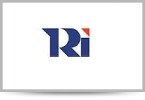Filter interviews by
Ewac Alloys Interview Questions and Answers
Ewac Alloys Interview Experiences
14 interviews found
I applied via Naukri.com and was interviewed in Aug 2022. There were 2 interview rounds.

(2 Questions)
- Q1. About mechanical subjects
- Q2. Automobile related questions
Interview Preparation Tips
I appeared for an interview in May 2025, where I was asked the following questions.
- Q1. What is iron carbide diagram ,why we used
- Ans.
The iron carbide diagram, or Fe-C diagram, illustrates the phases and transformations in iron-carbon alloys.
It shows the equilibrium phases of iron and carbon at various temperatures and compositions.
Key phases include ferrite (α-iron), cementite (Fe3C), and austenite (γ-iron).
Used to understand the properties of steel and cast iron for engineering applications.
Helps in predicting the microstructure of alloys during co...
- Q2. Explain about heat treatment
- Ans.
Heat treatment is a controlled process used to alter the physical and sometimes chemical properties of materials, especially metals.
Heat treatment involves heating and cooling processes to achieve desired material properties.
Common methods include annealing, quenching, and tempering.
Annealing softens metal, making it easier to work with; for example, steel is often annealed to improve ductility.
Quenching rapidly cools ...
(1 Question)
- Q1. All questions are on meteorological and TTT DIAGRAMS AND IRON CARBON DIAGRAM
Group discussions on any topic
(1 Question)
- Q1. Conversation with hr
(1 Question)
- Q1. Octane number . iron carbon diagram power cycle.metal property., family details, experience based questions, density based questions, grade of Steel
I applied via Company Website and was interviewed in Jun 2023. There were 4 interview rounds.

(3 Questions)
- Q1. Basics of Metallurgy
- Q2. Heat Treartmennt Process
- Q3. Weding processes and applications
(2 Questions)
- Q1. Current Companies performances
- Ans.
The current company's performance is strong and consistent.
The company has consistently met or exceeded its financial targets.
The company has experienced steady growth in revenue and market share.
The company has received positive feedback from customers and clients.
The company has successfully launched new products or services.
The company has a strong and talented team that contributes to its success.
- Q2. Business Strategies
(1 Question)
- Q1. Overall Performance Disscussion
Interview Preparation Tips
I applied via LinkedIn and was interviewed before Aug 2022. There were 3 interview rounds.

(3 Questions)
- Q1. What you are doing at your present company.
- Q2. Iron carbon diagram
- Ans.
Iron carbon diagram shows the phases of iron and carbon at different temperatures.
Shows the phases of iron and carbon at different temperatures
Includes regions for austenite, ferrite, cementite, and pearlite
Helps in understanding the microstructure of steel
- Q3. Type of metals in metallurgy
- Ans.
Metallurgy involves the study and manipulation of various types of metals for industrial purposes.
Metals commonly used in metallurgy include iron, aluminum, copper, and zinc.
Metals can be categorized as ferrous (containing iron) or non-ferrous.
Metals can also be classified as base metals (e.g. copper, lead) or noble metals (e.g. gold, platinum).
(1 Question)
- Q1. Case study on your Currant job
Interview Preparation Tips
I appeared for an interview before Apr 2024, where I was asked the following questions.
- Q1. Prepair with basic welding & metal treatment processes.
- Q2. How you promote sales in your region ?
I applied via Recruitment Consulltant and was interviewed before May 2023. There were 2 interview rounds.
(2 Questions)
- Q1. Generic question about work experience and knowledge.
- Q2. Question related to strength and weaknesses.
(1 Question)
- Q1. Asked me about my achivemnets, way of working and what can be changed in an organisation.
Interview Preparation Tips
I applied via Company Website and was interviewed before Jan 2022. There were 3 interview rounds.

(1 Question)
- Q1. Your experience Your interests Future plans
- Ans.
I have 5 years of experience as an Application Specialist. My interests include staying up-to-date with the latest technology trends and continuously learning new skills. In the future, I plan to pursue advanced certifications and take on leadership roles.
5 years of experience as an Application Specialist
Passionate about staying up-to-date with technology trends
Continuous learning and skill development
Future plans incl...
(1 Question)
- Q1. Technical questions about materials Details of products used in last companies Basic Formulas used in mechanical engineering
Interview Preparation Tips

(2 Questions)
- Q1. What is your favourite subject?
- Ans.
My favorite subject is leadership, as it combines strategy, communication, and team dynamics to drive organizational success.
Leadership principles: Understanding different leadership styles, such as transformational and transactional leadership.
Team dynamics: Exploring how effective teams are built and maintained, using examples from successful companies.
Strategic decision-making: Analyzing case studies where strong le...
- Q2. Basically test the knowledge on subject said by candidate.
Interview Preparation Tips
I applied via Approached by Company and was interviewed in Sep 2021. There were 3 interview rounds.

(2 Questions)
- Q1. About Training and Current job profile
- Q2. Sound knowledge of technical
(1 Question)
- Q1. Why do you want to leave current company
Interview Preparation Tips
- Thermal Engineering
- Fluid Mechanics
- Manufacturing Engineering
Top trending discussions






Ewac Alloys Interview FAQs
Tell us how to improve this page.
Ewac Alloys Interviews By Designations
Interview Questions for Popular Designations
Overall Interview Experience Rating
based on 12 interview experiences
Difficulty level
Duration
Interview Questions from Similar Companies
Ewac Alloys Reviews and Ratings
based on 134 reviews
Rating in categories
|
Application Specialist
175
salaries
| ₹4 L/yr - ₹9 L/yr |
|
Territory Sales Executive
51
salaries
| ₹10.9 L/yr - ₹18 L/yr |
|
Applications Engineer
30
salaries
| ₹3 L/yr - ₹8 L/yr |
|
Territory Sales Manager
15
salaries
| ₹6.8 L/yr - ₹14.6 L/yr |
|
Sales Engineer
11
salaries
| ₹4.9 L/yr - ₹7 L/yr |

Europa Locks

Trelleborg

MITA

Tokai Rubber Auto Parts India
- Home >
- Interviews >
- Ewac Alloys Interview Questions













